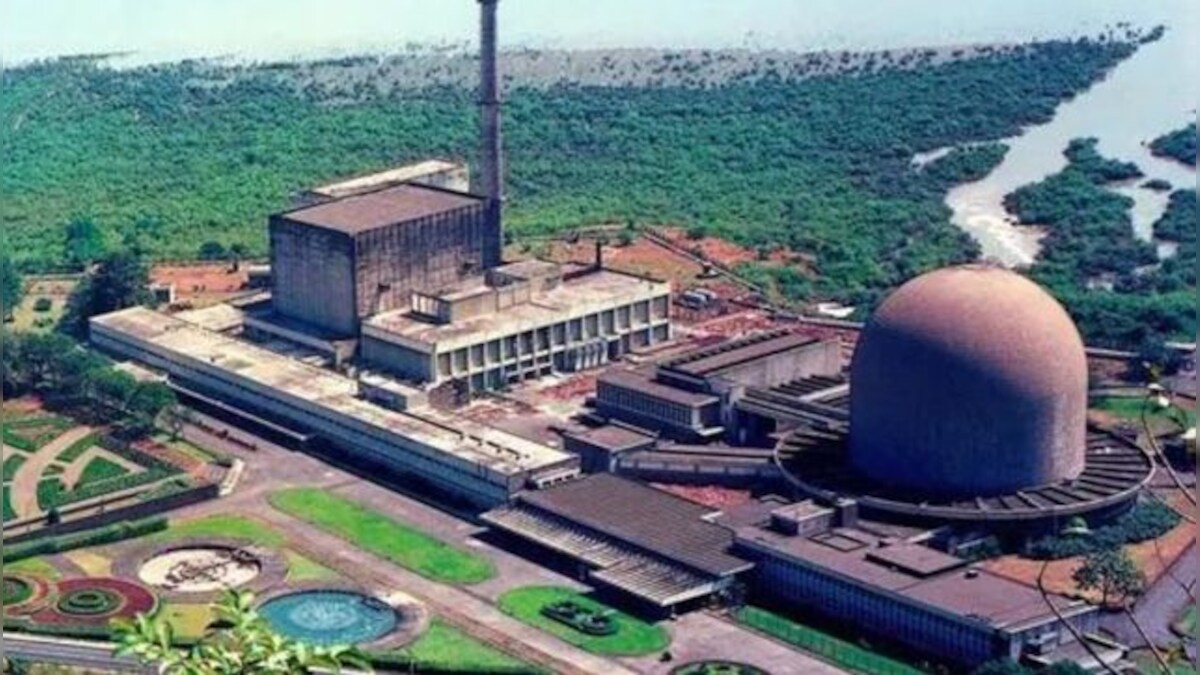INS_Vikrant
FULL MEMBER

- Joined
- Nov 2, 2015
- Messages
- 1,730
- Reaction score
- -7
- Country
- Location
As per a report published in the National Security Archive, back in 1968, while visiting Trombay’s Canada-Indian Reactor (CIR), Canadian inspectors were unnerved by data suggesting that India was heading towards developing a nuclear device.
The recently declassified US State Department telegram revealed Canadian nuclear experts told US diplomats that a reactor fuel had been irradiated at a low enough level to produce weapons grade plutonium. According to them, if India wanted to, it could produce up to 12 kilogram of plutonium a year.
nuclear agreements on heavy water supply.
As per the National Security Archive, the November 1970 US demarche presented to the Indian government stated that use of plutonium produced pursuant to US-Indian civil agreements for (the) manufacture (of) PNE devices would be incompatible with such agreements and that they would strongly object to its use.
India’s response
In the response that was not publicised before, Indian officials declared that they did not intend to develop nuclear weapons but said that they had wide scope to use nuclear technology for any peaceful purposes.
India’s first nuclear test
Subsequently, India would go on to conduct its first nuclear test in May 1974. Following it, US intelligence attempted to determine the near-term direction of Indian policy and a recently declassified June 1974 Interagency Intelligence Memorandum acknowledged that Washington had no evidence of Indian nuclear decision-making but estimated that the policymakers had several major choices before them.
The choices
One of the choices was continuing developing nuclear power for peaceful uses, with no military purposes and another major choice was a covert build-up of small weapons inventory under the cover of a PNE program “with little or no improvement of delivery capabilities.”
India’s stand on nuclear power
With the 1974 test, India became the sixth country to develop nuclear capability, but it said it is only testing a PNE and not an actual weapon, an approach it has maintained since then. Subsequently, the Indian government, despite gaining enough sophistication to create weapons, has maintained that it has continued its nuclear program for peaceful uses, such as economic development. This in turn has led India to reject the Nuclear Non-proliferation Treaty (NPT) as a threat to its independence and to refuse to accept the safeguards and inspections of the International Atomic Energy Agency (IAEA).

 www.google.com
www.google.com

 www.google.com
www.google.com
The recently declassified US State Department telegram revealed Canadian nuclear experts told US diplomats that a reactor fuel had been irradiated at a low enough level to produce weapons grade plutonium. According to them, if India wanted to, it could produce up to 12 kilogram of plutonium a year.
nuclear agreements on heavy water supply.
As per the National Security Archive, the November 1970 US demarche presented to the Indian government stated that use of plutonium produced pursuant to US-Indian civil agreements for (the) manufacture (of) PNE devices would be incompatible with such agreements and that they would strongly object to its use.
India’s response
In the response that was not publicised before, Indian officials declared that they did not intend to develop nuclear weapons but said that they had wide scope to use nuclear technology for any peaceful purposes.
India’s first nuclear test
Subsequently, India would go on to conduct its first nuclear test in May 1974. Following it, US intelligence attempted to determine the near-term direction of Indian policy and a recently declassified June 1974 Interagency Intelligence Memorandum acknowledged that Washington had no evidence of Indian nuclear decision-making but estimated that the policymakers had several major choices before them.
The choices
One of the choices was continuing developing nuclear power for peaceful uses, with no military purposes and another major choice was a covert build-up of small weapons inventory under the cover of a PNE program “with little or no improvement of delivery capabilities.”
India’s stand on nuclear power
With the 1974 test, India became the sixth country to develop nuclear capability, but it said it is only testing a PNE and not an actual weapon, an approach it has maintained since then. Subsequently, the Indian government, despite gaining enough sophistication to create weapons, has maintained that it has continued its nuclear program for peaceful uses, such as economic development. This in turn has led India to reject the Nuclear Non-proliferation Treaty (NPT) as a threat to its independence and to refuse to accept the safeguards and inspections of the International Atomic Energy Agency (IAEA).

US was wary of India’s nuclear programme even in 1960s, say American declassified documents
The documents show that Canadian nuclear inspectors visiting the Canada-India Reactor at Trombay in Mumbai in June 1968 were unsettled by data that suggested India was heading towards the development of a nuclear device

US was wary of India’s nuclear programme even in 1960s, say American declassified documents
The documents show that Canadian nuclear inspectors visiting the Canada-India Reactor at Trombay in Mumbai in June 1968 were unsettled by data that suggested India was heading towards the development of a nuclear device
